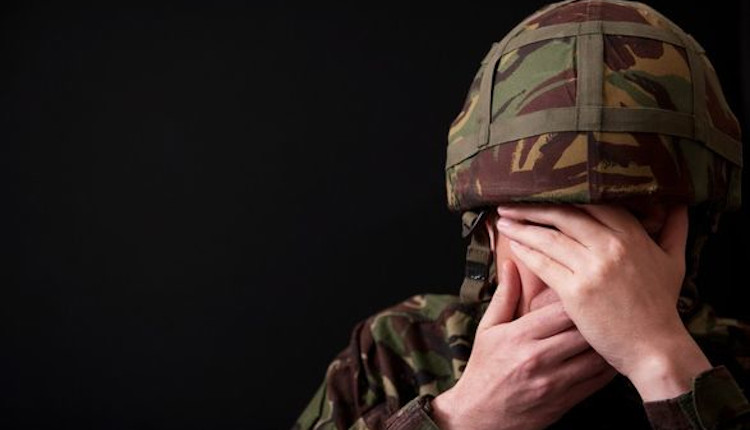
PTSD alone didn’t increase heart disease risk in veterans with Post-traumatic stress disorder
Study Highlight on coexisting medical conditions, psychiatric disorders, heavy smoking and illicit drug use may explain the increased risk for heart disease among veterans with post-traumatic stress disorder.
DALLAS, Feb. 13, 2019 — Post-traumatic stress disorder (PTSD) by itself does not explain the increased risk of cardiovascular disease in veterans with this condition. A combination of physical disorders, psychiatric disorders and smoking, that are more common in patients with PTSD, may explain the association, according to new research in Journal of the American Heart Association, the Open Access Journal of the American Heart Association/American Stroke Association. (Embargoed until 4 a.m. CT / 5 a.m. ET Wednesday, Feb. 13, 2019)
Researchers examined whether one or a combination of heart disease risk factors common in those with post-traumatic stress disorder can explain the association between PTSD and cardiovascular disease. They reviewed electronic health records of 2,519 Veterans Affairs (VA) patients diagnosed with PTSD and 1,659 without PTSD. Participants were aged 30-70 (87 per cent male; 60 per cent white), had no cardiovascular disease diagnoses for 12 months prior and were followed for at least three years.
Post-traumatic stress disorder: researchers found.
Among VA patients, those diagnosed with post-traumatic stress disorder were 41 per cent more likely to develop circulatory and heart disease than those without PTSD.
Smoking, depression, other anxiety disorders, sleep disorders, Type 2 diabetes, obesity, high blood pressure, and cholesterol, were significantly more prevalent among patients with PTSD than those without.
No single comorbid condition explained the association between PTSD and incident cardiovascular disease, after adjusting for a combination of physical and psychiatric disorders, smoking, sleep disorder, substance use disorders, PTSD was not associated with new cases of cardiovascular disease.
“This suggests there is no single comorbidity or behavior that explains the link between post traumatic stress disorder and cardiovascular disease,” said study lead author Jeffrey Scherrer, Ph.D., professor and director, Division of Research in the Department of Family and Community Medicine at the Saint Louis University School of Medicine in Missouri. “Instead, a combination of physical disorders, psychiatric disorders and smoking — that are more common in patients with PTSD versus without PTSD — appear to explain the association between PTSD and cardiovascular disease.”
PTSD: researchers’ work
Researchers cautioned that the results may not be generalized to patients older than 70 or to non-veteran populations. In addition, the study did not measure lifetime cardiovascular disease risk; therefore, the association between post-traumatic stress disorder and risk of cardiovascular disease over many decades may differ from the present results.
“For veterans, and likely non-veterans, heart disease prevention efforts should focus on helping patients reduce weight, control high blood pressure, cholesterol, Type 2 diabetes, depression, anxiety disorders, sleep problems, substance abuse and smoking,” Scherrer said. “That is a long list, and for patients with many of these conditions it is challenging yet important to manage all of them.”
“Recognizing that post traumatic stress disorder does not preordain cardiovascular disease may empower patients to seek care to prevent and/or manage CVD risk factors,” Scherrer said.
Co-authors are Joanne Salas, M.P.H.; Beth E. Cohen, M.D., M.Sc.; Paula P. Schnurr, Ph.D.; F. David Schneider, M.D., M.S.P.H.; Kathleen M. Chard, Ph.D.; Peter Tuerk, Ph.D.; Matthew J. Friedman, M.D., Ph.D.; Sonya B. Norman, Ph.D.; Carissa van den Berk-Clark, Ph.D.; and Patrick Lustman, Ph.D. Author disclosures are listed on the manuscript.
The National Heart Lung and Blood Institute funded the study.
About the American Heart Association
OTHER RELATED ARTICLES
PTSD: First responders find themselves into Daniel artworks


